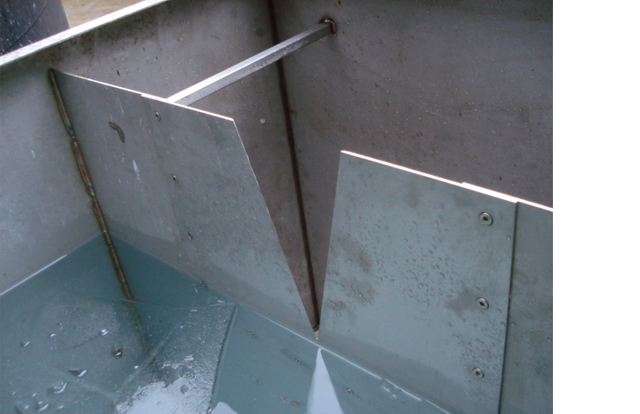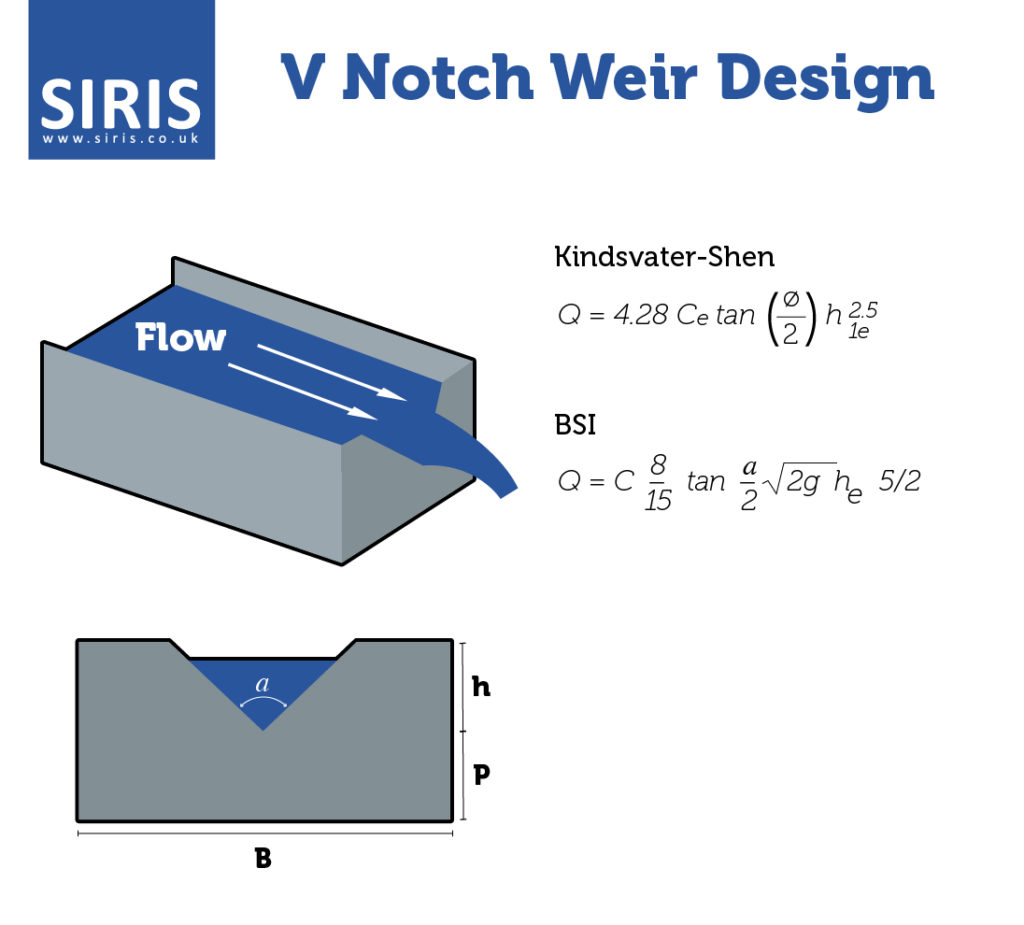When designed, installed and maintained correctly, thin plate V notch weirs provide a highly accurate solution for open channel flow measurement. In order to maintain accuracy, it’s essential that V notch weir design is calculated correctly. In this guide we’ll explain how V notch weirs work, their pros and cons, and the equations involved in V notch weir design.
What is a V notch weir?
V notch weirs really are just that – a thin plate weir with a ‘V’ notch cut into it. The weir is placed to obstruct open channel flow and allow water to flow over the notch. This enables us to accurately measure the flow, by measuring the head upstream of the V notch.
These types of weirs are particularly effective at measuring low flow rates, as the V notch weir design allows small changes in head to be accurately measured and thus the flow rate calculated.

Pros of V notch weirs
- Simple design that is easy to install
- Ideal for cleaner effluent, such as industrial discharge and final effluent outfall
- Can be supplied as part of a compliant gauging structure
- Relatively low cost to design and install
- Good option for low flow rates
- Can be fitted into an existing chamber, if size allows
Cons of V notch weirs
- There needs to be an adequately sized weir pool and approach to sufficiently condition the flow before it reaches the weir plate to ensure accuracy in measurement
- Periodic maintenance is required – it’s important that the weir crest itself is regularly checked to ensure there is no sediment or fouling. Over the longer term, no rounding or surface abrasions which can impact flow (SIRIS weir plates are manufactured using marine-grade steel to avoid this problem)
- V notch weirs are not designed to work in submergence conditions and need the weir crest to be high enough to allow for free-flowing discharge
- Not considered accurate for flow heads above two feet
V notch weir design: calculations
There are several standard sizes for V notch weir design. We tend to opt for 28º4′ and 53º8′ and 90º, depending on flow rate. These sizes can be calculated using the BSI equation. For higher flows we use a rectangular notch rather than a V notch.
While these are usually sufficient, because it’s essential that the sizing is correct to ensure accurate flow measurement, sometimes a non-standard size is required. There is a standard equation to calculate this, known as the Kindsvater-Shen equation.

You can read more about the Kindsvater-Shen equation and find an online calculator here.
Find out more about V notch weir design
All SIRIS thin plate weirs are fabricated from marine-grade 316 stainless steel and machined by highly-accurate laser. This ensures that they do not lose dimensional tolerance or bend/deform and won’t be susceptible to crest damage. Each weir includes a simple-to-read flow scale to provide visual validation. They are also guaranteed to meet MCERTS requirements and satisfy BS/ISO 1438, when installed and maintained by our experts.
To find out more or get a quote, call 0191 5131313 or email hello@siris.co.uk.